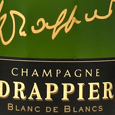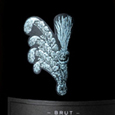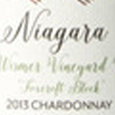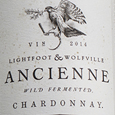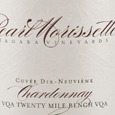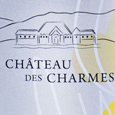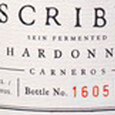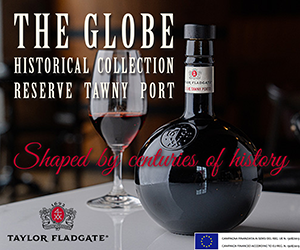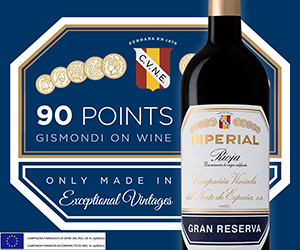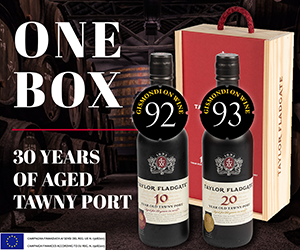In mid-July I joined hundreds of fellow wine folk in Niagara to celebrate the original cool grape: chardonnay.
The seventh annual International Cool Climate Chardonnay Celebration (i4c) saw 59 wineries from nine countries pour 159 chardonnays over the two days. In order to uphold the "international" title, more than half of the wineries were from outside Ontario, including Australia, Austria, France, Chile, New Zealand, Spain, Uruguay and the United States. We took in a full Friday of sessions at the School of Cool, opened by keynote speaker Karen McNeil and led by moderator John Szabo, and enjoyed an evening walkabout Flights of Chardonnay tasting at the local airport (complete with food trucks and a DJ). Saturday was spent in Niagara vineyards and lunching in a barn with winemakers, before we took in a cool chardonnay grand tasting and dinner under the stars at Ridley College. Trade and public mingled together throughout, all united by their appreciation for the coolest, chardy.
The i4c weekend, inspired in part by the International Pinot Noir Celebration (a long-standing Willamette event that I participated in the following weekend - report coming soon), was founded by 28 Ontario wineries back in April 2010. The wineries came together to form the International Cool Climate Chardonnay Association as a not-for-profit group dedicated to reinstating chardonnay’s dignity. According to organizers at inception, “It’s time for chardonnay to return to centre stage. It’s time for the re-birth of Cool.” According to the association, chardonnay can be cool by coastal effect, continental effect, altitude or latitude. I reckon that the majority of wines poured throughout the weekend were also cool by attitude, with Canadian favourites Norm Hardie, Bachelder, Benjamin Bridge, Lightfoot and Wolfville up in my top scoring wines of the event.
Chardonnay is proof positive that everything old becomes cool again. After attaining a pinnacle of popularity in the late 1980s, the inevitable backlash spurned the ubiquitous ABC movement – Anything But Chardonnay. Naysayers flogged the overoaked, flabby, mass-produced wines that had been pumped out to meet consumer demand worldwide. The adaptable and hearty grape flourishes easily in most climates and conditions, making it one of the most widely-planted grape varieties on the globe, planted in more wine regions than any other. The final results are a spectrum of flavours and styles – from pristine Blanc de Blancs Champagne to flinty and precise Chablis and from noble Burgundian heavyweights to creamy Californian ripeness and yes, even to lusciously sweet icewine.
The chardonnay grape itself is fairly neutral, owing a great deal of its flavour to vineyard and winemaking decisions. It’s a blank canvas for winemakers to colour and control – too oft, in the past, with overuse of wood, or sugar. When oak or ripeness isn’t allowed to overpower, the clean, crisp nature of the grape emerges. Cooler climates preserve this freshness and help balance the alcohol, which is naturally on the higher side. Higher altitude and latitude helps, as does aggressive pruning and canopy management. Clonal selection is key too, as there are dozens of clones, each with pros and cons to be matched to site. When yields are kept low and hands are kept at bay, chardonnay is a terroir transmitter. We tried to tap into this during one School of Cool session: Soil Smackdown. After an intro by Californian soil scientist and viticulturalist Paul R. Anamosa, Ph.D, the crowd blind tasted ten chardonnays from around the globe, and tried to match soils to wine. We collectively failed, miserably. "‘Is anyone else getting the sense that this is perhaps futile?" Szabo queried as wines were revealed. My favourite School session was The Sugar Trials, guided by CCOVI scientist Dr. Belinda Kemp, and a look at how dosage affects sparkling wine. Dr. Kemp shared some of her research on how dosage affects foam height and stability, as well as the effect on aromatic esters over time. We blind tasted the same Tawse wine dosed 4 different ways: zero dosage, 3, 6 and 9 g/l, and had to peg which wine matched to which dosage. I found this exercise relatively easy (as did most of the crowd), and was clearly reminded how a gram or two of sugar entirely changes the finished wine.
The weekend was a great success, in part because of the number of high quality wines and participants. One of my favourite surprises was the media room, with all the wines poured at the events (plus a number of additions) able for media to taste through at their leisure. I could have spent a whole solo day in that Cool School tasting through the wines. Hopefully next year I'll return for more study sessions.
Here are a dozen of my coolest chardonnays from the weekend.

 quicksearch
quicksearch


